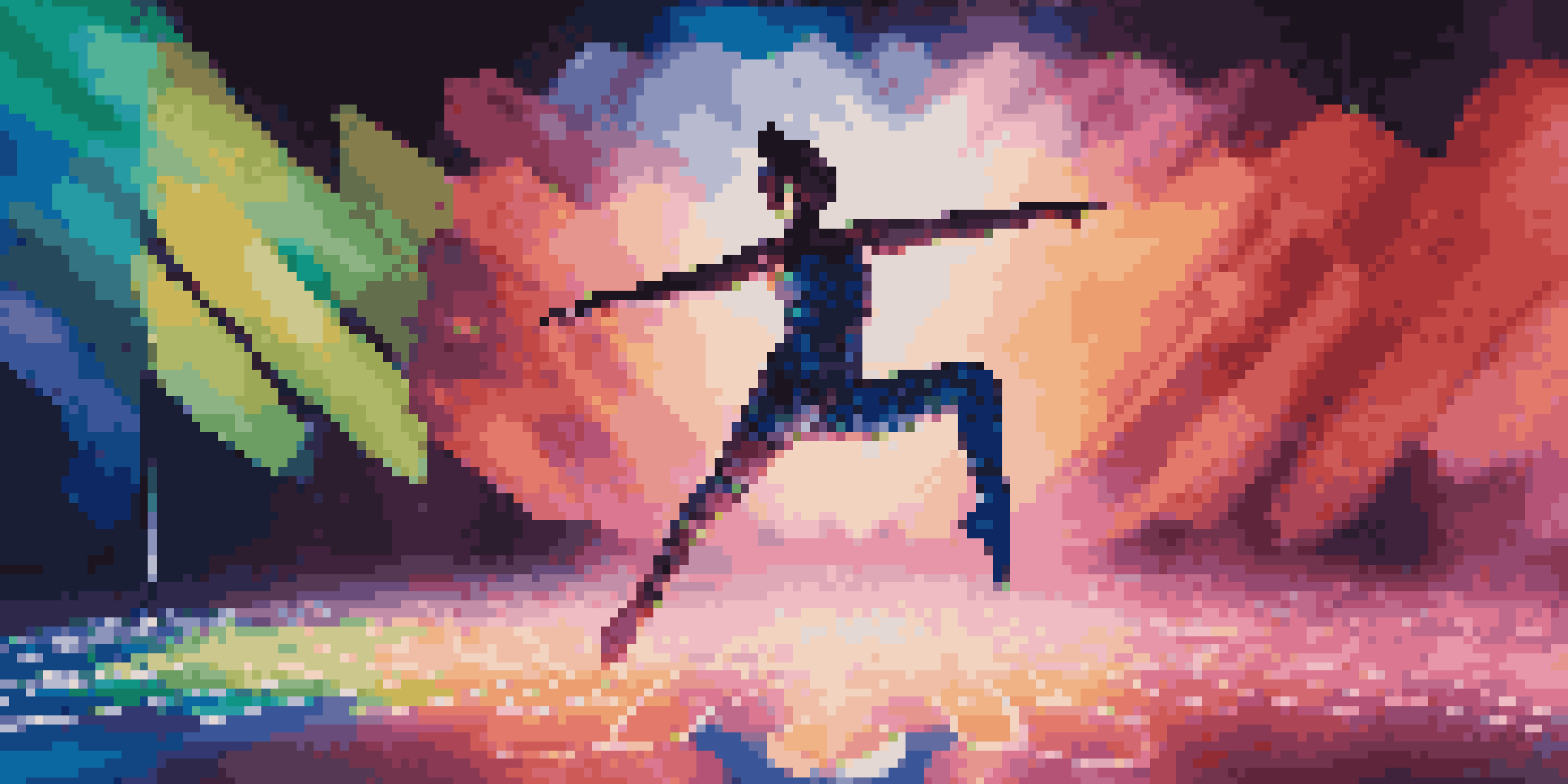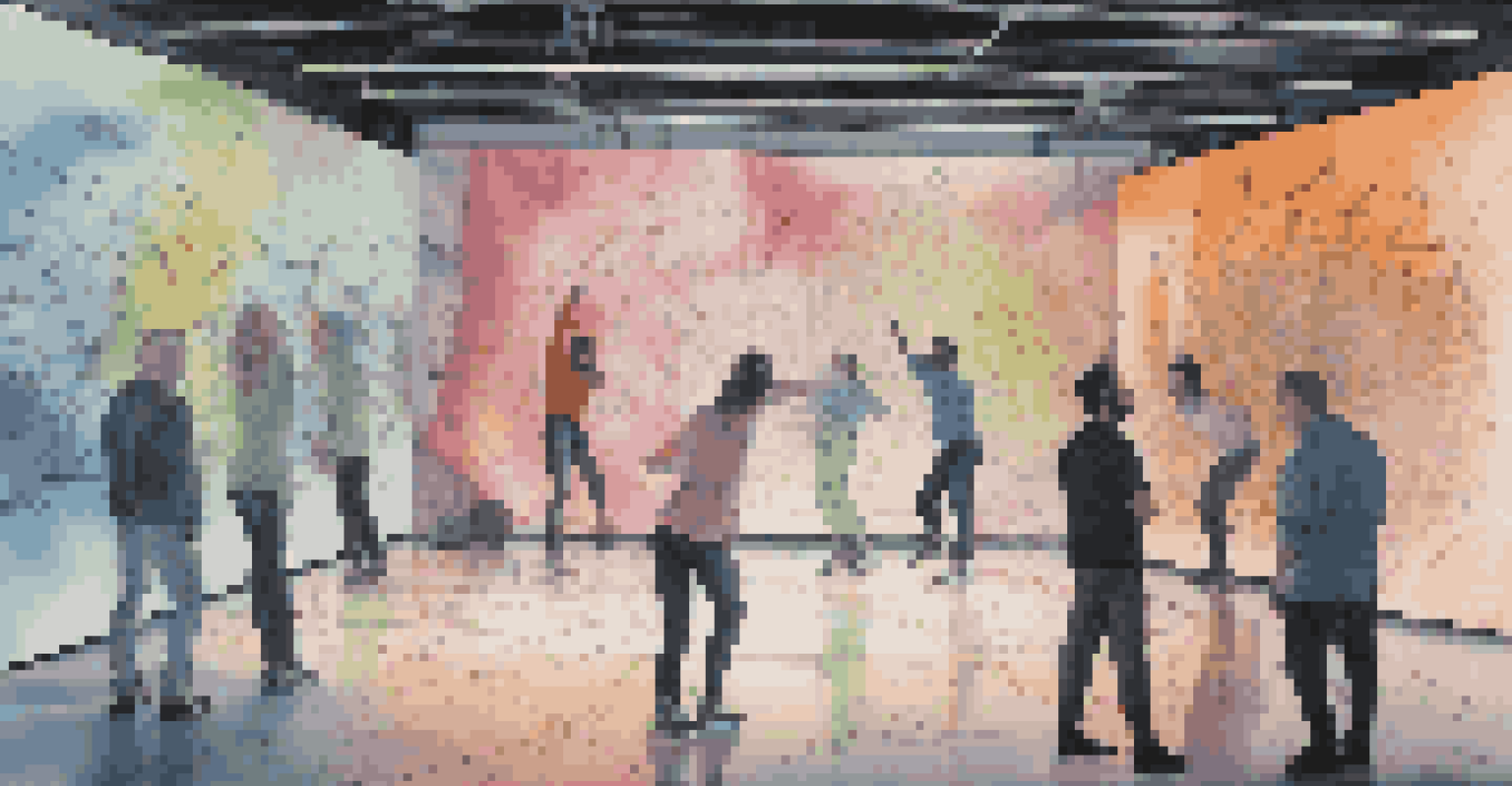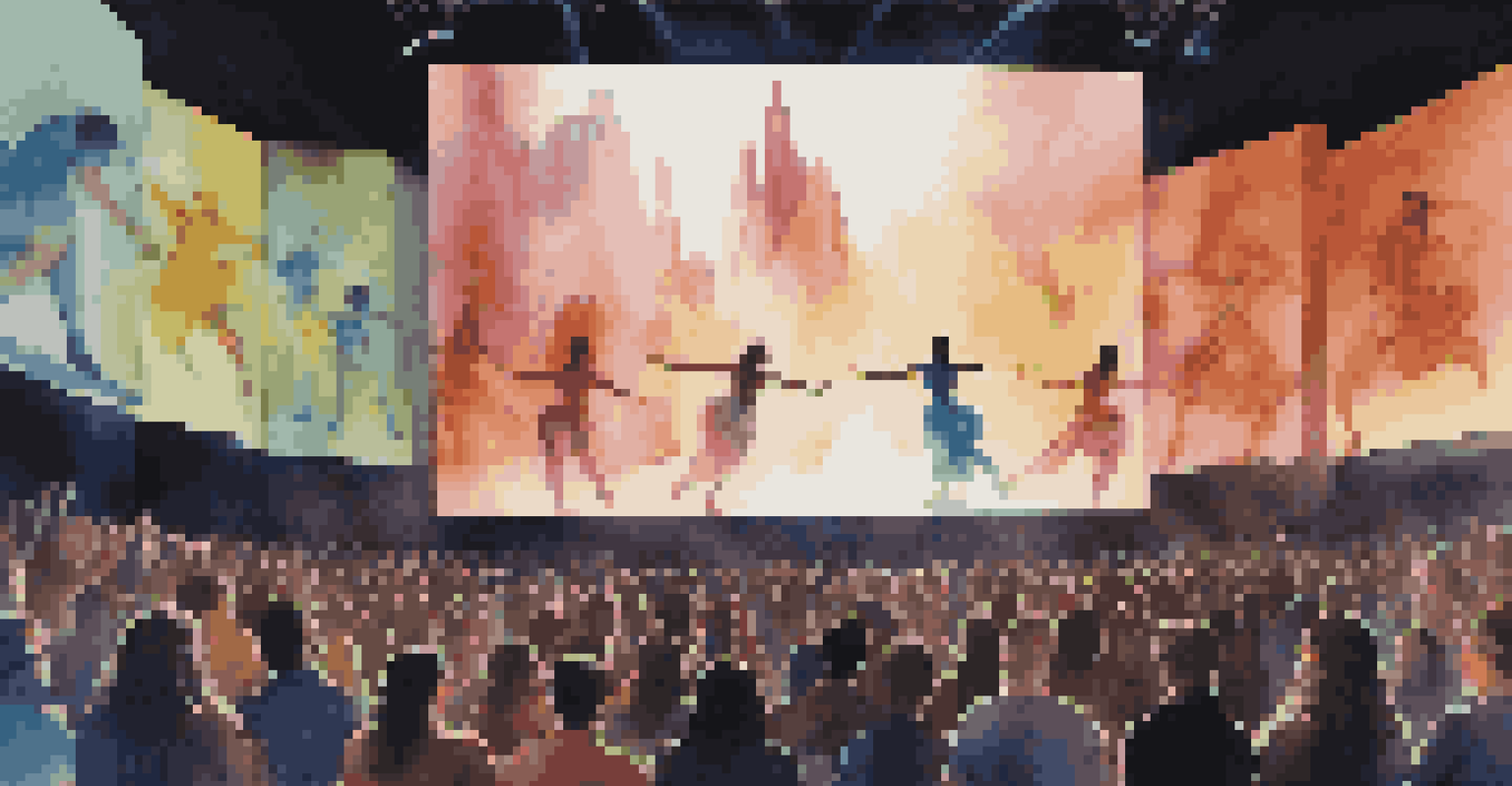Exploring the Use of Projection Mapping in Dance Productions

Understanding Projection Mapping and Its Basics
Projection mapping is a technique that uses video projectors to turn objects, often irregularly shaped, into a display surface for video projection. By mapping a video onto a physical object, it can create an illusion of movement and depth that enhances the visual experience. This technology has gained popularity in various art forms, including dance, where it adds an extra layer of storytelling and engagement.
Art is not a mirror held up to reality, but a hammer with which to shape it.
In dance productions, projection mapping can transform a static stage into a dynamic environment, altering the audience's perception of space and movement. For instance, a dancer could appear to be leaping through a digital landscape that shifts with their movements, making the performance more immersive. This blend of technology and art creates a unique atmosphere that captivates viewers.
As the integration of projection mapping continues to evolve, it raises interesting questions about the nature of performance art. How does technology enhance artistic expression, and what new narratives can it help tell? These are exciting considerations for choreographers and artists looking to push the boundaries of their craft.
Historical Context: The Evolution of Dance and Technology
The relationship between dance and technology is not new; it has evolved significantly over the years. From the early days of stage lighting to the integration of sound design, technology has always played a role in enhancing performance. However, projection mapping represents a more profound shift, allowing for real-time interaction between the dancer and the visual elements.

In the late 20th century, we saw the emergence of multimedia dance performances that began to incorporate video and digital imagery. Artists like Merce Cunningham were pioneers in this area, using film and video to create new choreographic possibilities. Today, projection mapping builds on this legacy, offering choreographers an exciting tool to explore innovative storytelling methods.
Projection Mapping Enhances Dance
This technology transforms traditional performances by merging visual storytelling with choreography, creating immersive experiences for audiences.
This historical context shows us that the fusion of dance and technology is a continuous journey. As artists embrace new advancements, they create fresh experiences that resonate with contemporary audiences, ensuring that the evolution of performance art remains vibrant and relevant.
The Creative Process: Choreography Meets Technology
Incorporating projection mapping into dance choreography requires a collaborative approach between choreographers, visual artists, and technical teams. This partnership is essential to ensure that the visuals complement the dancers' movements rather than distract from them. A successful integration of these elements can lead to breathtaking performances that are both visually stunning and deeply emotional.
The technology you use impresses no one. The experience you create with it is everything.
Choreographers often start with a concept or theme that they want to express through the dance. Once the foundational choreography is established, they can begin to brainstorm how projection mapping can enhance the narrative. For example, a dance about transformation might use visuals that morph and change in tandem with the performers, creating a powerful connection between the movement and imagery.
This creative process is iterative, requiring experimentation and adjustments. Dancers may need to adapt their movements based on how the projections interact with their choreography, leading to a dynamic interplay between the performers and the projected visuals. This fluid collaboration can result in innovative performances that push artistic boundaries.
Case Studies: Successful Dance Productions Utilizing Projection
Several dance productions have successfully incorporated projection mapping, serving as inspiring examples for future projects. One notable instance is the performance 'Tree of Codes' by Wayne McGregor, which merges choreography with a stunning visual landscape created through projection. The interplay of light and movement in this piece invites audiences to experience the narrative on multiple levels.
Another remarkable example is 'In the Body of the World,' where projection mapping is used to create a visceral connection between the dancers and the themes of the performance. By transforming the stage with evocative visuals that reflect the emotional journey of the dancers, the production captivates the audience and heightens their engagement.
Historical Evolution of Dance Tech
The integration of technology in dance has evolved from basic stage lighting to advanced projection mapping, continually enhancing artistic expression.
These case studies highlight how projection mapping can be effectively utilized to enhance storytelling in dance. They demonstrate that when artists embrace technology, they can create performances that resonate deeply with audiences and leave a lasting impression.
Engaging the Audience: The Impact of Visual Storytelling
One of the most valuable aspects of projection mapping in dance is its ability to engage the audience on a deeper level. By combining movement with visual storytelling, productions can evoke emotions and provoke thought, allowing viewers to connect with the performance more profoundly. This immersive experience can transform a passive audience into active participants in the narrative.
For example, when a dancer interacts with projected visuals that reflect their emotions or the story's themes, it creates a dialogue between the performer and the audience. This interaction can elicit empathy and understanding, drawing viewers into the performance's emotional landscape. As a result, audiences may leave with a more profound appreciation for the themes being explored.
Moreover, the incorporation of technology like projection mapping can attract a wider audience, including those who may not typically attend dance performances. By blending traditional art forms with cutting-edge technology, productions can appeal to a diverse range of spectators, fostering a greater appreciation for the art of dance.
Challenges and Considerations in Projection Mapping for Dance
While projection mapping offers exciting possibilities, it also comes with its own set of challenges. One significant hurdle is the need for precise technical execution, as any misalignment can disrupt the visual experience. This requires careful planning and coordination between the technical team and the dancers to ensure a seamless integration of visuals and movement.
Another consideration is maintaining the focus on the dancers themselves. With such captivating visuals on display, there’s a risk that the audience may become more interested in the projections than the performance. Choreographers and directors must strike a balance to ensure that the projections enhance the dance without overshadowing it.
Future of Dance Embraces Innovation
As new technologies like AR and VR emerge, they promise to further elevate dance productions, offering even more dynamic and engaging performances.
Lastly, the cost of implementing projection mapping can be a barrier for some productions. High-quality projectors, software, and skilled technicians can require significant investment. However, with the right planning and creative solutions, many artists are finding ways to incorporate this technology without breaking the bank.
The Future of Dance Production: Embracing New Technologies
As technology continues to advance, the future of dance production looks promising, with projection mapping leading the way. Artists are constantly exploring new possibilities, and the integration of augmented reality (AR) and virtual reality (VR) may soon become commonplace in dance performances. These advancements will likely offer even more immersive experiences for audiences.
The potential for collaboration within the arts community is also expanding. As projection mapping becomes more accessible, we can expect to see a rise in interdisciplinary projects that merge dance with other art forms, such as theater and visual arts. This fusion can lead to innovative performances that challenge traditional boundaries and create new artistic expressions.

Ultimately, the future of dance production is about exploration and creativity. By embracing emerging technologies, artists can continue to push the envelope of what is possible in performance, ensuring that dance remains a vibrant and evolving art form that resonates with audiences for years to come.